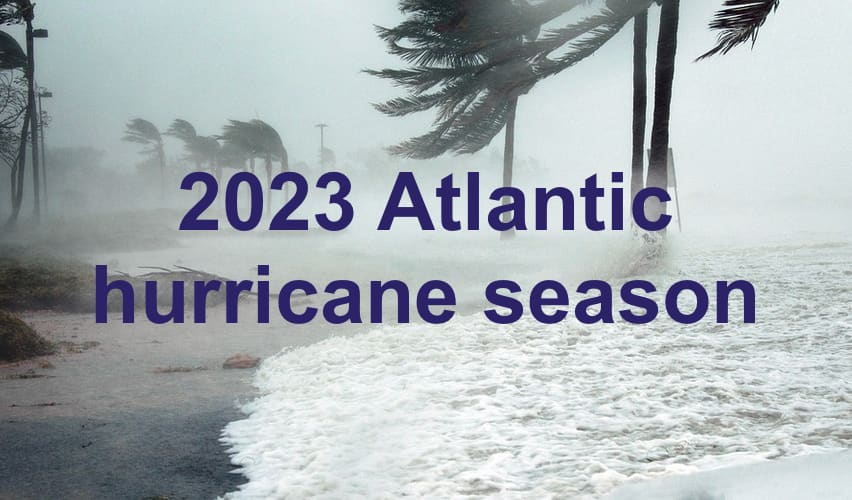CSU hurricane season forecast warns on uncertainty & warm Atlantic SST’s

Colorado State University’s tropical meteorology team led by Phil Klotzbach has issued its first long-range forecast for the 2023 Atlantic hurricane season, predicting slightly below-average activity, but at the same time cautioning on uncertainty related to the strength of El Niño and warmer than normal Atlantic sea surface temperatures (SST’s).
The Colorado State University (CSU) tropical meteorology unit echoes some of the other forecast teams we track, who as we explained earlier today have been cautioning against the straight out assumption that a developing El Niño year means a reduced level of hurricane activity or impact.
As we reported earlier, some forecasters are actually suggesting there could be elevated risk for parts of the US coastline, including Florida, especially if El Nino proves less strong than expected, while Atlantic SST’s are particularly warm in some areas outside of the main development region (MDR).
The CSU forecast team predict 13 named tropical storms, 6 hurricanes and 2 major hurricanes for the 2023 Atlantic season, generating an accumulated cyclone energy (ACE) of 100.
That’s below the near-term 1991 – 2020 average of 14 named storms, 7 hurricanes and 3 major hurricanes.
The forecasters explain, “Current neutral ENSO conditions look fairly likely to transition to El Niño this summer/fall. However, there is considerable uncertainty as to how strong an El Niño would be, if it does develop.”
But caution that, “Sea surface temperatures in the eastern and central Atlantic are much warmer than normal, so if a robust El Niño does not develop, the potential still exists for a busy Atlantic hurricane season.”
As a result, they say that, “Larger-than-normal uncertainty exists with this outlook.”
Going into more detail on sea surface temperatures in the Atlantic, the CSU forecasters say, “When waters in the eastern and central tropical and subtropical Atlantic are warmer than normal, this tends to force a weaker subtropical high and associated weaker winds blowing across the tropical Atlantic. These conditions lead to warmer waters in the tropical Atlantic for the peak of the Atlantic hurricane season.”
Adding that, “The anomalously warm eastern and central tropical and subtropical Atlantic favor an above-normal season.
“Given the conflicting signals between a potentially robust El Niño and an anomalously warm tropical and subtropical Atlantic, with this outlook.”
In addition they state that, “We anticipate a near-average probability for major hurricanes making landfall along the continental United States coastline and in the Caribbean.”
On landfall probabilities, the CSU team give a slightly above-average 44 percent chance for a major hurricane making landfall somewhere on the entire U.S. coastline during the season.
Again, a slightly above-average 22 percent chance of this is given for the Florida Peninsula and slightly above-average 28 percent for the Gulf Coast, as well as a slightly above-average 49% chance a major hurricane tracks through the Caribbean this season.
It’s interesting how aligned hurricane forecast teams are on this uncertainty caused by warmer than normal Atlantic SST’s, as well as how strong the impending El Nino actually becomes.
It seems that this could be a season with a good deal of uncertainty, as with any El Niño unlikely to become strong until mid-season on, while the Atlantic SST’s could be above-normal temperatures around the same time, how that affects tropical storm and hurricane formation remains to be seen.
Track the 2023 Atlantic tropical storm and hurricane season on our dedicated page and we’ll update you as new information emerges.






